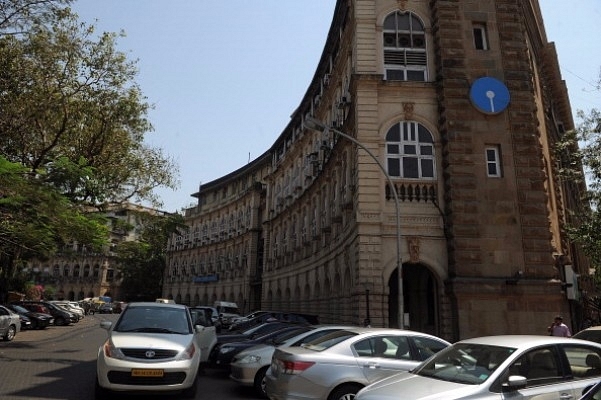Economy
Economy In Urgent Need Of A Fiscal Push To Shore Up Growth: SBI
- This is no time for fiscal fundamentalism. The government must prime the pump or risk delaying economic revival, which can prove very costly.

The State Bank of India’s Mumbai head office (PUNIT PARANJPE/AFP/Getty Images)
The gross domestic product (GDP) growth has been falling since the first quarter of 2016-17. From a peak of 7.9 per cent in that quarter, growth has decelerated to 5.7 per cent in the first quarter of this fiscal year. It is now clear that demonetisation and the introduction of goods and services tax (GST) have played a part in this slowdown, but their impact is transitory and will pass sooner rather than later.
However, the decline in growth started well before demonetisation came into play and is expected to continue even after the teething problems from the rollout of GST are sorted out.
The State Bank of India (SBI) in its Ecowrap report has said “we are in a slowdown mode since second quarter (Q2) of Fiscal Year 2017 (FY17) and any slowdown that has been prolonged till Q1FY18 is technically not short-term in nature or even transient.”
“A slowdown in demand has only aggravated the situation. Private sector capital formation is also languishing as resolution of stressed assets is yet to happen,” the report adds.
Thus, the SBI report recommends that the government step in and use fiscal policy as a tool to rev up the economy. Since the government can’t wait for the Reserve Bank of India (RBI) to take action on the monetary policy front by cutting rates, it will have to use the tool available to it. And it will need to increase spending as well.
The problem, however, is that the fiscal deficit as of July is already a cause for alarm, with 92 per cent of the year’s target accounted for.
Be that as it may, the government can’t afford to put the brakes on its spending as it will be deflationary, warns the report. “We believe, with uncertainty regarding GST implementation and monetary policy support to growth not forthcoming it will not be prudent on the part of Government to reduce spending as other growth drivers are missing,” the report reads.
The report also recommends that the government increase its short-term borrowings from the current levels. Currently, there is excess liquidity in the market amounting to Rs 2.7 lakh crore, thanks to demonetisation, and thus ramping up borrowings in the short term will not lead to higher interest rates. “Even the long-term interest rate will not rise as it depends on inflation expectations which are currently on the lower side,” the report notes.
Two main reasons for the inflation rate rising to double digits were the “staggering 38 per cent increase in Minimum Support Prices in FY09, followed by 27 per cent in FY11 for foodgrains”. This is not the case at present.
The report also seconds the suggestion made by many to depreciate the currency to shore up export competitiveness. Appreciation in the rupee is one of the main reasons why exports have crashed recently. However, the report warns, while this is a necessary step, it is not sufficient as far as reviving growth is concerned because the share of net exports in GDP expenditure is -0.7 per cent.
But will the speed breakers erected by the Fiscal Responsibility and Budget Management Committee be a problem? The panel had recommended a 3 per cent fiscal deficit target for the next three years. However, it also provided ‘escape clauses’ for deviations of up to 0.5 per cent of GDP from this target. The government can take this liberty if “far-reaching structural reforms in the economy with unanticipated fiscal implications” have been implemented. This is exactly what has happened with demonetisation and the GST. It’s an excellent alibi that the government can use to get out of the fiscal consolidation corner it has pushed itself into.
This is no time for fiscal fundamentalism. The government must prime the pump or risk delaying economic revival, which can prove very costly.
Introducing ElectionsHQ + 50 Ground Reports Project
The 2024 elections might seem easy to guess, but there are some important questions that shouldn't be missed.
Do freebies still sway voters? Do people prioritise infrastructure when voting? How will Punjab vote?
The answers to these questions provide great insights into where we, as a country, are headed in the years to come.
Swarajya is starting a project with an aim to do 50 solid ground stories and a smart commentary service on WhatsApp, a one-of-a-kind. We'd love your support during this election season.
Click below to contribute.
Latest